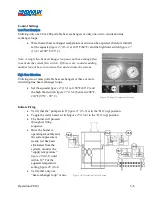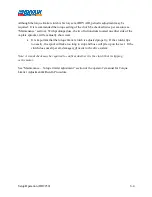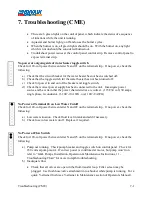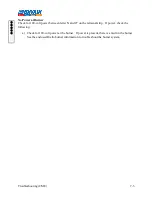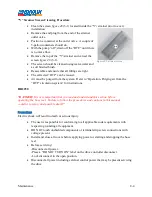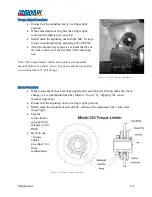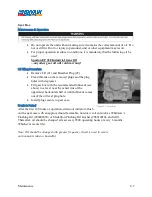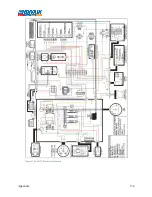
Maintenance
8-2
and can be difficult to control. Some fuel oils contain substances, which cause
fireside corrosion. Sulphur, vanadium and sodium are among the materials that may
contribute to this problem. The probability of trouble from this source depends to a
large degree on the amount of Sulphur in the fuel and on the care used in cleaning the
fireside heating surfaces. This is particularly true when preparing a boiler for a
period of idleness. Preventing this problem also depends on keeping the boiler
heating surfaces dry when a boiler is out of service.
•
The person responsible for water heater maintenance should be certain that the
fireside surfaces of the water heaters in his care are thoroughly cleaned at the end of
the firing season. He should also observe the fireside surfaces during the firing
season and if signs of corrosion are discovered, a reputable consultant should be
contacted.
•
The flue pipe and chimney cap should be taken off once a year and thoroughly
cleaned of all soot.
Heat Exchanger Cleaning Procedure
•
Remove the burner from the water heater
figure 46
(1-1)
•
Remover the plate
figure 46
(1-2) from the bottom of the water heater.
•
Remove the refractory board
figure 46
(1-3) from the water heater by reaching into
the burner hole and lightly tapping the board with your hand until it drops down.
•
Remove the flue collar
figure 46
(1-4) to expose the
burner tubes
figure 46
(1-5).
•
Remove all flue baffles
figure 46
(1-6).
•
Clean burner tubes
figure 46
(1-5) with a steel round
brush or rag on a piece of rod.
•
Vacuum all debris.
Figure 46-Heat Exchanger Breakdown
Содержание 600 GTS Series
Страница 2: ......
Страница 47: ...Appendix 9 3 Electrical Schematics Figure 56 600 GTS sub 40 Electrical Schematic...
Страница 48: ...Appendix 9 4 Figure 57 600 GTS Electrical Schematic...
Страница 49: ...Appendix 9 5 Figure 58 HR2250 Electrical Schematic...
Страница 50: ...Appendix 9 6 Figure 59 Trailer Wiring Schematic...


